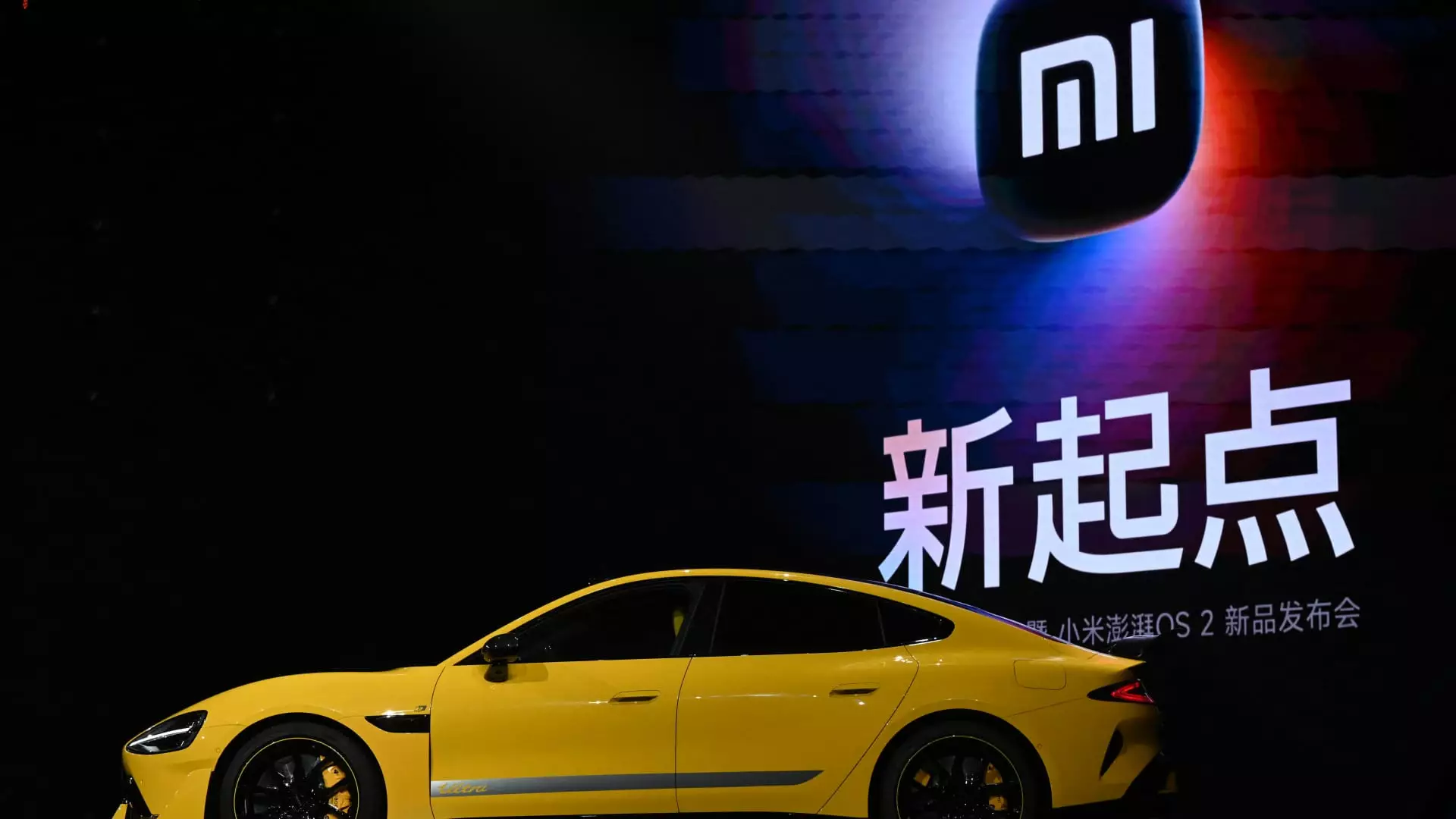China’s dynamic automotive industry is undergoing an intense transformation as electric vehicle (EV) manufacturers like Xiaomi assert their presence. Announcing over 20,000 deliveries of its SU7 model just in October, Xiaomi demonstrates its commitment to establishing a foothold in a market dominated by established players such as Tesla and homegrown competitors like Xpeng and Nio. With a goal of reaching 100,000 SU7 deliveries by the end of November, it is evident that Xiaomi is positioning itself to be a formidable player in the fiercely competitive EV arena.
Xiaomi’s foray into electric vehicles began in earnest in 2021, alongside the development of a dedicated production facility. This aggressive timeline is especially remarkable when compared to the lengthy durations required by competitors like Xpeng, Nio, and Tesla to manufacture similar quantities of cars. For instance, while Xiaomi managed to reach 75,000 total SU7 deliveries within a year and a half, it took Xpeng about six years to achieve the same milestone, highlighting Xiaomi’s capability for rapid operational scaling.
The SU7 is priced strategically below Tesla’s Model 3 in China, making it an appealing option for budget-conscious consumers. This strategic pricing, combined with a growing acceptance of EVs among Chinese consumers, has supported Xiaomi’s quick penetration into the market. In a move that underscores its competitive positioning, Xiaomi recently launched a high-end version of the SU7, the SU7 Ultra, with pre-orders apparently indicative of strong consumer interest—over 3,600 pre-orders filled within just ten minutes of announcement.
Xiaomi’s entry into the EV market comes amidst fierce competition from domestic rivals and international players. Established companies such as Tesla have been active in enhancing their operational efficiencies and adjusting price points, as indicated by Tesla’s recent price cuts. Additionally, car brands like Zeekr have successfully produced large volumes in a shorter timeline, further complicating the competitive landscape.
While other brands, including Nio, continue to grapple with consistent delivery figures and overall performance, Xiaomi’s approach seems to be yielding positive results thus far. Analysts from Stansberry Research highlight Xiaomi’s robust growth as a key factor that could reshape perceptions regarding its long-term viability in the market. This momentum comes alongside Xiaomi’s ambitious plans for vehicle deliveries in 2024, which now stand at 250,000—a notable increase from previous estimates.
Xiaomi’s trajectory may also reflect a broader trend as consumers become more attuned to electric vehicles and their functionalities. The rapid influx of pre-orders for the SU7 Ultra may suggest an evolving consumer landscape, driven by technological advancements and increasing demand for sustainable transportation. With their ambitions to carve out a niche in the high-performance segment, Xiaomi appears poised to capture a large share of the EV enthusiast demographic.
This strategic alignment with consumer preferences has been emphasized in recent analyses. Citi, for instance, has raised its forecasts not only for Xiaomi’s vehicle delivery targets but also for smartphone shipments, indicating an interconnected market strategy where automotive operations may reinforce its consumer electronics business. By offering cutting-edge technology in both electric cars and smartphones, Xiaomi could create a powerful synergistic effect that enhances customer loyalty and brand positioning.
As Xiaomi seeks to expand its footprint beyond Chinese borders and ultimately capture a global audience, challenges remain. The company has indicated that it may take several years before launching its EVs internationally. This delay presents a window of opportunity for competitors to fortify their positions and innovate further.
Moreover, market dynamics will constantly evolve, requiring adaptability not only in production strategies but also in marketing and consumer engagement approaches. As the industry progresses, consumer preferences may shift, and Xiaomi will need to stay ahead of trends while balancing cost-efficiency with innovation.
Conclusively, Xiaomi’s bold entry into the electric vehicle sector illustrates its potential to disrupt an established market, armed with rapid production capabilities, strategic pricing, and a vibrant product lineup. Whether it can maintain this momentum and expand successfully into international markets remains to be seen, but its current trajectory indicates a strong start.

